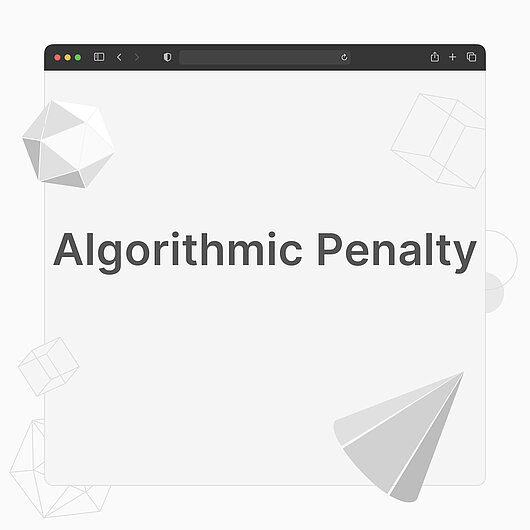- Why Us?
- Features
White Label
For SaaS Platforms & Agencies
Provide our complete analytics suite to your clients, directly within your own interface and with your/their own branding. Discover Analytics-as-a-Service and White Label Analytics. Great benefit, minimal effort.
- Pricing
- White Label
- Success Stories
- Partner
- ResourcesExpand Your Knowledge
Algorithmic Penalty
TL;DR

There are two types of penalties that can be given by Google: manual and algorithmic.
The algorithmic penalty may affect website rankings after an update to the Google algorithm.
Previous major updates like Panda and Penguin have been at the root of algorithmic penalties for websites who do not comply with webmaster guidelines. This type of penalty can not be reconsidered by Google and websites need to fix the issues they believe caused the penalty.
What is an Algorithmic Penalty?
If you notice your website is going through major drops in rankings on the Google SERP, it may be caused by two types of issues:
- A manual penalty from a Google employee who has found your website in violation of the Google recommended policies for webmasters.
- An algorithmic penalty not aimed specifically at your website, but at a certain common practice that may not be in compliance with Google webmaster guidelines.
You can easily differentiate between the two, as a manual penalty will be displayed in your Google Search Console account, in the “Security and Manual Actions” menu. If there is no mention of a penalty here, then the cause for your significant drop in rankings must be an algorithmic penalty.
Google constantly updates the algorithm it uses and the most important changes are made public. At times, they will announce that an important update has been made, but without giving details about what exactly has changed. It is after these announcements that you are most likely to see a drop in your websites’ rankings. Some updates are small and affect niche websites and they can often be hard to keep up with, as they may not even be announced. At the same time, core updates can be made, that are highly influential and impact a great deal of websites.
How can you recover from an Algorithmic Penalty in Google search rankings?
Unlike manual penalties, for which you can ask for a re-evaluation using Search Console, an algorithmic penalty may be harder to recover from. You should try to fix the issues that you believe brought you the penalty, but this will not automatically reinstate your website to the previous position. Rebuilding trust may be a slightly longer process, with some experts giving it at least 6 months. To speed up the process, use Google Search Console to “invite” Google to crawl the pages that you fixed again.

